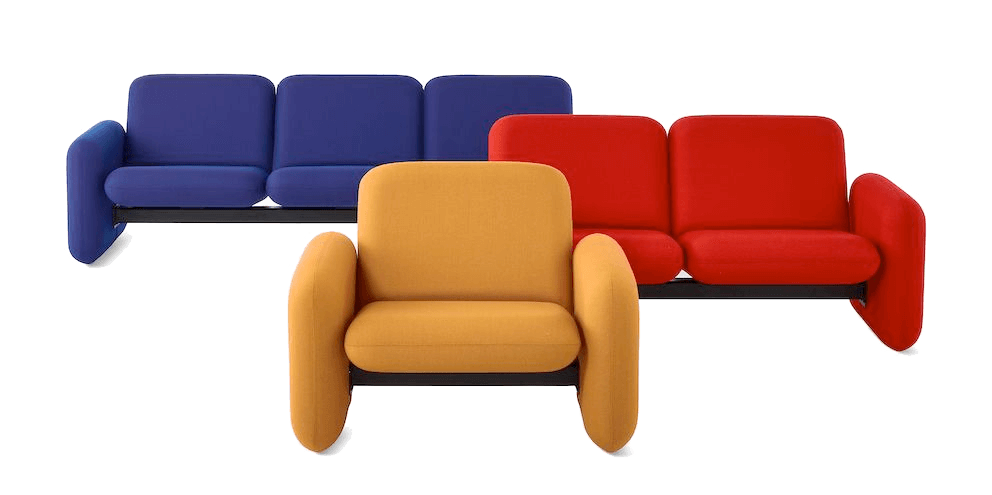Unison Workspaces
Level 2, 165 The Strand
Parnell, Auckland







Designed by Ray Wilkes and first introduced in 1976, this playful, eye-catching lounge seating has made a lasting impression.
We’ve updated the essential post-modern design with power and material options. Everything else we’ve kept the same, from its injection-moulded foam cushion construction to its integrated table option.
Scalable and Suitable
Whether you’re looking to inspire collaboration in a casual office setting, make a statement in your living room, or invigorate a student union, Wilkes Modular Sofa Group hits the mark. It comes in a range of configurations, from a single chair to a six-seat sofa, and – the beauty of modularity – you can specify a table instead of a seat unit anywhere along the run. A power option offers additional functionality.
Structured for Comfort
Comfort starts with geometry – specifically the 105-degree angle of the seat and back. Steel brackets that join the seat and back have enough give that each back section can flex independently, providing a surprising level of individual comfort. The final factor? The rounded-edge cushions themselves, likened to the shape of Chiclet gum, which never “puddle” or lose their shape.
Mod Versatility
For upholstery, you can go full PoMo with bright solids or put an entirely different twist on it with a textile from Maharam. Its distinctive silhouette paired with versatile upholstery options make it adaptable to a wide variety of architectural styles.

The brilliantly simple design and bold colors of Wilkes Modular Sofa Group have made it a darling of postmodernism. It’s also extremely versatile, with six configurations, from armchair to six-seater, and square tabletops that can be specified anywhere along the run of seating.
Originally introduced in 1976, Wilkes Modular Sofa Group’s success wasn’t a foregone conclusion at the time Wilkes was designing it. Getting traction for it inside Herman Miller was a challenge, owing to the sudden prominence of Action Office and the overwhelming popularity of its workspace systems.
But then Wilkes encountered a new foam injection machine in the manufacturing area of the plant. It produced the clean lines and smooth, contoured shapes he had envisioned—and it did so reliably, every time. Every cushion came out perfectly square with rounded edges, like Chiclet gum, which lent the seating collection its widely known nickname. It was a shape that previously hadn’t been possible to make.



Wilkes Modular Sofa Group came out of experimentation with what was then an innovation in manufacturing—in the same way that the iconic Eames molded plywood chairs were a result of manufacturing technology. For Wilkes, “Minimalism isn’t just straight lines. The most important thing is the form and the simplicity of making it.”
And the memorable color palette? Credit for that goes to Alexander Girard, who had applied the saturated rainbow hues to the company’s first two-way-stretch upholstery fabric. The combination of Wilkes’s straightforward design thinking with Girard’s famously colorful palette made the so-called “Chiclet” a viable, sellable collection.
We’ve updated the design with power and upholstery options, making it more functional and more accessible to people with a broader range of aesthetic preferences. Beyond that, we know to leave well enough alone. While the 1970s may once again be in fashion, it's the honesty of Wilkes's design and its straightforward construction that make Wilkes Modular Sofa Group an enduring classic.
Product Downloads: